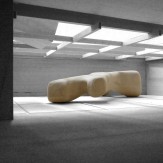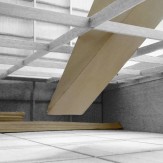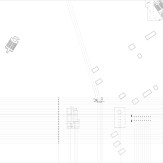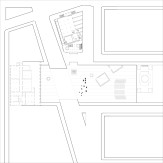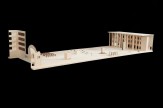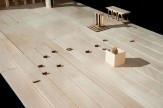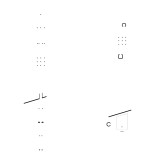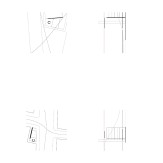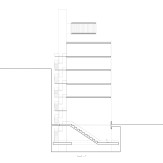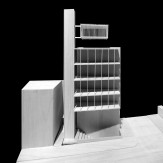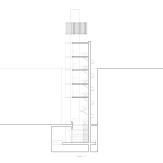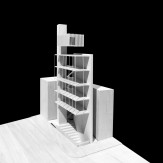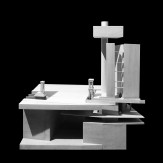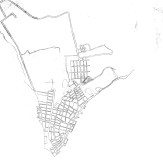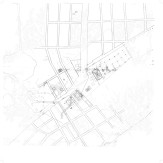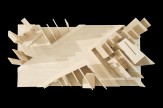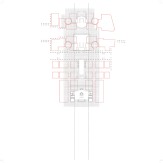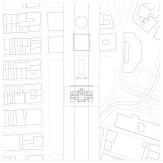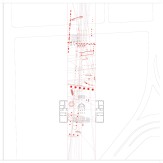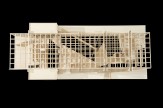Selected Undergraduate Design Studio Projects--Design IV, Spring 2013
Spring 2013
Professors Diane Lewis, Peter Schubert, Daniel Sherer, Mersiha Veledar & Daniel Meridor
ARCHITECTURE OF THE CITY STUDIO YOUNG KIESLER RESEARCH AWARD STUDY IN CONJUNCTION WITH THE NEW MUSEUM INVITATION TO PARTICIPATE IN IDEAS CITY.
THE BOWERY: ARCHITECTURE AND CONTINUUM THE CITY AS CIVIC ART WORK
Each student proposed a civic institution for the Bowery with a view on civic program for the twenty first century as integral to site and memory. The study to derive the frame for each proposal integrated the following drawings:
1. MORPHOLOGICAL STUDY OF THE BOWERY: A minimum of three eras of architectural form and civic program were drawn in plan at 32nd and eighth inch scales. These drawings were overlaid to see the transformation of the city as it manifests in the Bowery in order that each participant to designate and derive a site condition of great import in the memory of the Bowery.
2. LEXICON OF PLAN SYNTAX: Each participant made a “lexicon” drawing of the unique and memorable elements of plan syntax they discovered within their plan morphology drawings. These elements became a text for the spatial organization and elements of the intervention.
3. SELECT ARTIST OF THE BOWERY: A map of the studios and domiciles of the great artists who worked on the Bowery was an element of research in this project. Each student selected one or more artist and explored their work, the titles of their work and their writings to inspire the project program, content and form.
4. SELECT EXISTING CONDITIONS MODEL: Each participant constructed a one eighth inch scale model of the existing conditions of their site of focus. This model was made as a given condition in which the elements and disposition of the field of civic activity were positioned, sized, and derived in form and relationship to the city fabric and the internal demands of the proposed program and spatial objective. The project is directed to an architecture that addresses the city as a spatial and a temporal field or still life, a civic spatial construct integrating art, humanist program, and the architect’s author’s hypothesis of the authentic civic memory embodied by the Bowery. In order to introduce the students to a more advanced understanding of architecture as opposed to the design of a singular internalized building.
5. TEXT/ORATION ON THE BOWERY—ARCHITECTURE AND CONTINUUM: Having begun with Freud’s quote on the city as a psychical phenomena as opposed to simply a dense human inhabitation —where all epochs of existence are simultaneously present from the earliest to the most contemporary —each student was asked to write answers to a series of prompts which were filmed mid semester for a video presented in the lobby of the New Museum for the Ideas City festival.
To complete the text developed throughout the semester for the final project presentation, each student concluded the text of their earlier writing that is in the video of their work with conclusive formulations.
Projects
-

141, Spring 2013, Project 1
-
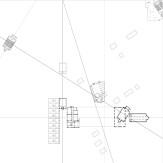
141, Spring 2013, Project 2
-
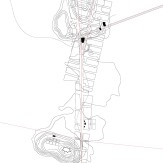
141, Spring 2013, Project 3
-
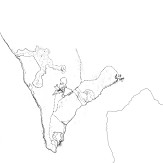
141, Spring 2013, Project 4
-

141, Spring 2013, Project 5
Back
141, Spring 2013, Project 1
Derek Lange
141, Spring 2013, Project 2
Ariana Revilla
141, Spring 2013, Project 3
Mark Tugman
141, Spring 2013, Project 4
William Hood
141, Spring 2013, Project 5
Derek Benson






